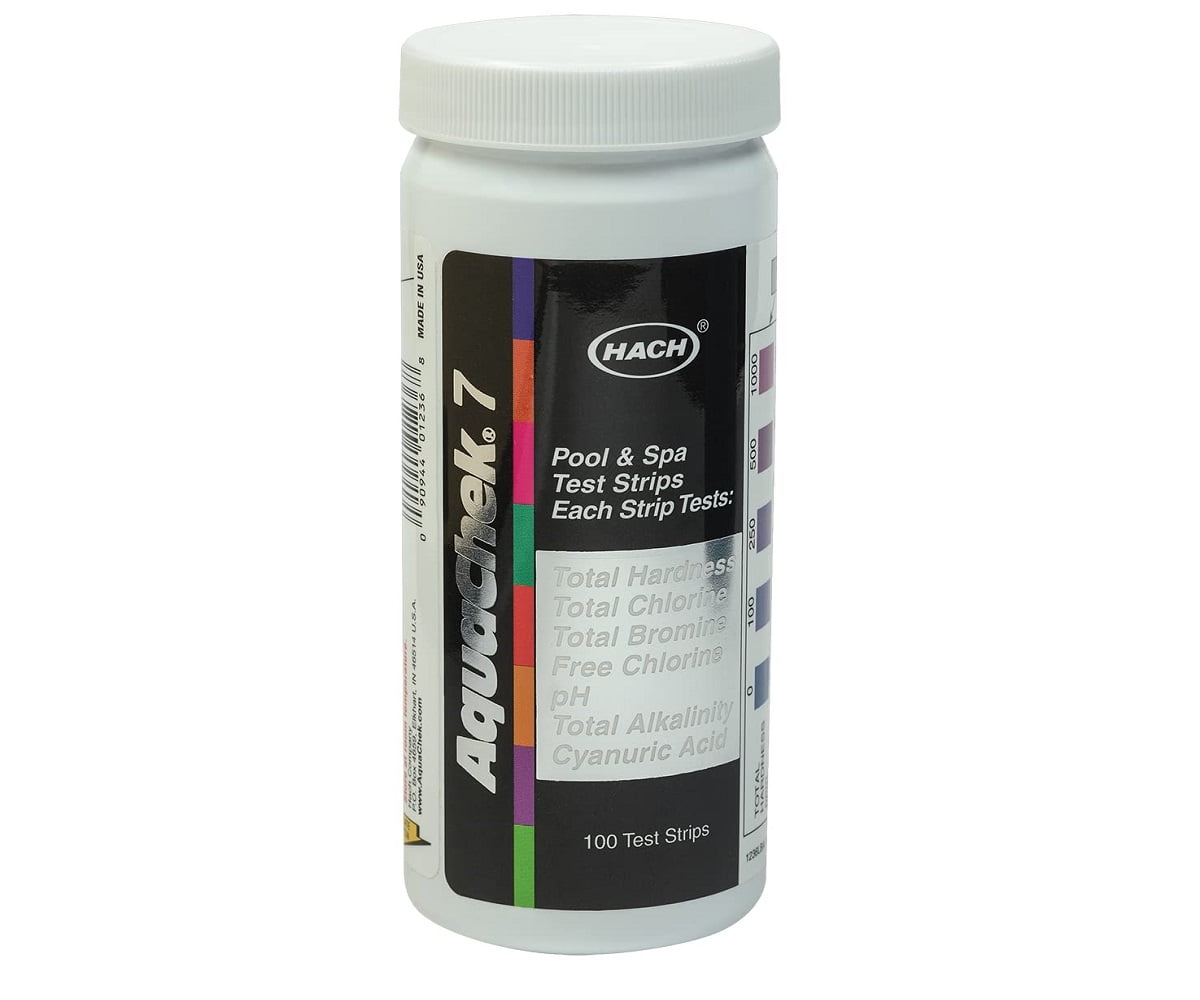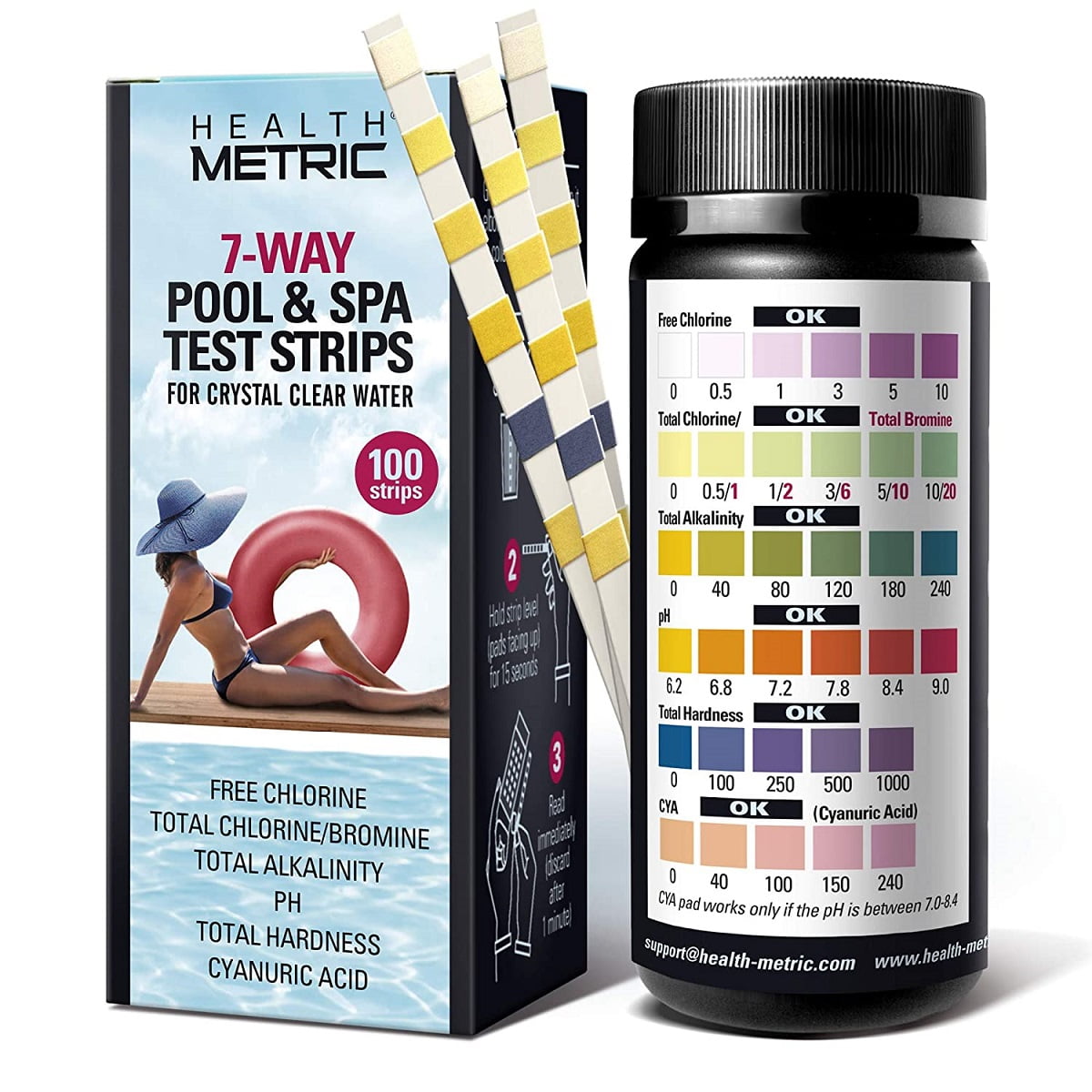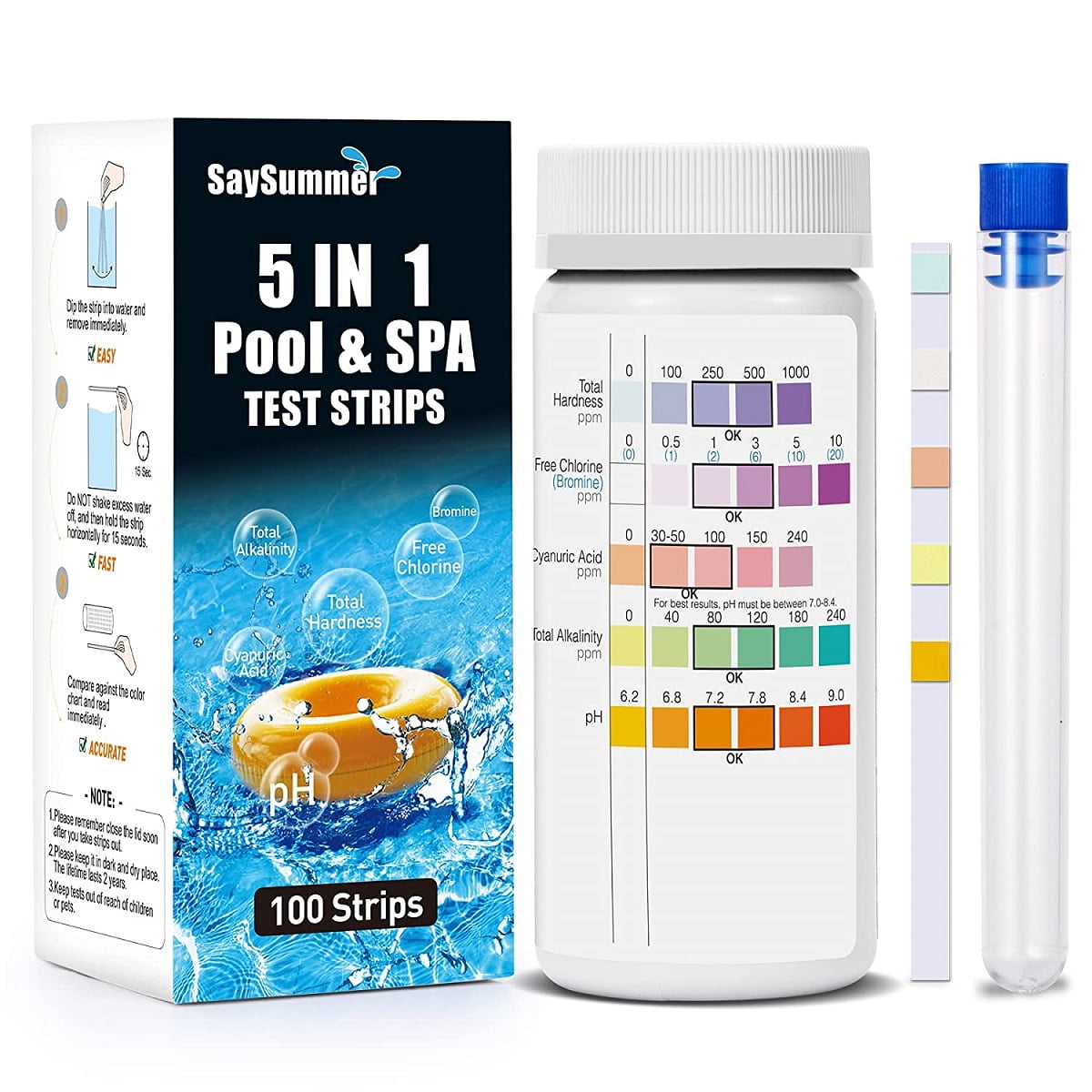Testing your pool is a necessary step to ensure that it remains clean and usable all year round. For this, you can either use a pool test kit, which is more accurate, or pool test strips, which are more affordable and convenient.

No matter how much you clean your pool, it can still be full of unwanted chemicals, which can disrupt the balance of the water and make the pool unusable. That’s why it’s important to test your pool water regularly with a pool test kit or strip, which will help you keep it in the right condition.
But what should you choose between a pool test kit and a strip? Dive in to know!
Liquid Test Kits

For the unversed, liquid test kits are essentially testing liquids that are quite popular among professionals and homeowners alike. But what makes them so sought-after? To help answer that, we’ve listed its primary advantages.
Advantages Of Liquid Test Kits
1. Accuracy
These liquid test kits use a method called titration to test the chemical markers in your pool water. And the efficacy of this process makes liquid kits more accurate than their strip counterparts.
However, the accuracy further depends on the type of liquid test you use. Some examples of these types are OTO, DPD, and FAS - DPD.
The tester should add a titrant (testing liquid) to a sample of the pool’s water, observe the change of color, and compare it to the color chart to determine the pH balance or combined chlorine level.
A test strip is often called a “guess strip” due to their inaccuracy and how easily they can be compromised when in contact with humidity. That’s why liquid pool kits are worth their price as they help the user receive precise results.
2. Parameters
Liquid tests allow you to test different parameters, as you can perform various tests with these kits to get a clearer picture about the water chemistry of your pool. While OTO testing kits can be used to determine pH and chlorine levels, DPD kits can measure free chlorine and total chlorine levels.
This is in contrast to test strips, which cannot perform more extensive tests like acid demand demands. They are also ineffective when it comes to testing the calcium hardness in your swimming pool water. Considering how important calcium hardness testing is for a pool, test kits should be the go-to choice in such cases.
3. Longevity
If you purchase a liquid test kit, you will also get a set of reagents necessary for testing the water chemistry of the pool. And these liquid reagents last for a couple of years until they are considered expired or unreliable.
Besides, the kit container itself can last for years if you store it in proper conditions as mentioned on the package. Only the reagents will need to be replaced if they are expired or exhausted.
Pool test strips, however, only last a year at the most maximum. Once expired, they are considered unreliable and should be replaced immediately if you want to continue testing the swimming pool water.
4. Quality
The liquid kit testing method is used by a lot of pool professionals and health departments, as it offers high-quality results. If you are a pool professional, then liquid testing is the most ideal option for you. Or if you’re someone who is worried about what’s in your pool water and need the test results to be accurate, this kit will do the job efficiently.
Disadvantages Of Liquid Test Kits
As efficient as they are, they do come with their own share of disadvantages, which include:
1. Cost
Liquid pool tests, though quite accurate, are extremely expensive. So, if you plan on testing pool water within a budget, this method might not be the one for you. Besides, you may need to purchase the reagents every 12 or every 24 months depending on the testing frequency. They can can be extremely expensive if you test the pool occasionally, like the pool season
Test strips, on the other hand, are pretty cheap, more so if you purchase them in bulk.
2. Time-Consuming
Considering it is a thorough testing process, liquid tests can take pretty long to be done with. Preparation alone can take up half the time that you have allotted for testing your pool water. After that, taking a good pool water sample, cleaning the container and identifying which reagent to use will take up quite an amount of time.
Once you have everything in place, you have to also ensure the right number of drops are added. If you’re testing more than one parameter, you would have to go through this entire process for each test. All in all, liquid testing kits can be quite time-consuming.
3. Complicated Usage
Liquid tests can be quite complicated to use, especially for a beginner. Although they may seem quite easy when it comes to their usage, they can be quite tricky to get the hang when reagents are introduced.
If you fail using the right amount of drops of water required for the test, it will make the result invalid. This will mean you will have to start over and make sure you get the number of drops right, which can be hard to get right on the first try.You may mess up a couple of times, which can be quite frustrating.
Pool Test Strips

Test strips are very common when it comes to pool water testing and are easily available at your local pool store. They have plenty of advantages, and we’ll be taking a look at a few.
Advantages Of Test Strips
1. Affordability
Test strips or extremely cheaper, especially when compared to liquid tests. As such, they are the perfect choice for beginner pool owners or people who don’t really need to test their pool very often.
2. Faster Use
Using test strips is not as complicated as using a pool test kit. All you have to do is take a step from the bottle, dip it into your pool water, and lay it on a flat surface till it shows the result. This process may take you a minute at the most. Liquid tests, on the other hand, will take you much longer to complete.
If you would like to test your pool’s water chemistry without spending the whole day doing so, test strips are an ideal choice for you. This is also another reason why they are extremely popular among beginners or new pool owners.
3. Easy Usage
Test strips do not need any extra items to help it function to test the pool water accurately. You can just take one from the bottle and dip it into your pool water. All you have to do is give the strip a few seconds and you have your result in front of you.
Since the steps are a lot easier, it prevents the possibility of human error. With liquid tests, the same cannot be said. They are much more prone to errors and would need you to redo the test when you make said error.
Disadvantages Of Test Strips
As perfect as they sound, they have their fair share of disadvantages as well. Here are a few.
1. Inaccurate
Test strips, though very easy to use, can be quite inaccurate when it comes to results. They can even produce varying results from one strip to the next one.
Moreover, test strips can be influenced by the humidity present in the air. Moreover, it can be difficult to interpret the color on the strip even with the color chart provided. This is because the colors on the strip can change with time.
Even though these test strips are quite cheap and easily available, many pool professionals argue that the money spent would be pointless as the tests come out inaccurate.
2. Viability
Liquid tests allow you to perform various kinds of tests on your pool to help measure the pH scale as well as the free and total chlorine levels. Test strips, on the other hand, do not offer you this feature. They are pretty restricted when it comes to their testing capabilities. For instance, test strips cannot perform acid demand tests, or measure the total hardness of the water.
Some pool owners need these tests to be done and cannot afford to overlook them. In events like these, test strips are not of much use or may end up not giving the user satisfactory results. Now, you may purchase different test strips meant for different tests. However, it can be quite expensive to purchase test strips for conducting just one test.
3. Lack Of Longevity
One thing a liquid test kit can guarantee you is longevity. Purchasing one test kit can last you anywhere from a year to two. The only thing that may need constant replacing would be the reagents of the liquid test kits.
Test strips, however, generally last for only up to a year at the most. Once they are expired, you cannot rely on them to give accurate results. Hence, the whole pack should be replaced. This ends up overruling their feature of being affordable and you will end up spending every year for a brand new strip test kit. And this isn’t something many pool owners will be ready to do.
How To Test Salt Water Pools?
As surprising as it may seem, not all pool water has chlorine in them. Some of them contain other substances like salt, and these saltwater pools will need to be tested as well. For this, you can find a dedicated pool test kit for saltwater pools, that typically come in a pack of 40.
Depending on the conditions of the pool, you may have to test your saltwater pool at least once or twice a week. This will help you take the right steps for pool maintenance to keep it in the optimal condition.
If you’re someone who uses their pool quite frequently, you must make sure that your pool water is in good condition. And testing kits will be of great help in maintaining the right pool chemistry so that there are no health hazards.
Also, keep in mind that too many chemicals or the wrong pH level can damage the pool material, which may then take up thousands of dollars in repairs.
How To Use Pool Test Kits?
Now, you may be wondering “how to use pool test kits?” Although the exact testing process will be mentioned on the package, we will quickly walk you through the general steps to give you an idea.
- First, detach the tube caps. Make sure you rinse the tubes before use
- Proceed to fill the tube with water from the pool till the level mentioned on the tube
- Make sure to take water from the end of the pool that is elbow-deep
- You can now proceed to drop the provided reagents in the water.
- Put on the tube cap and shake the solution gently to mix
- Once you get a color, compare it with the color chart that is provided with the kit

Pool Test Kits Vs Strips Final Words
If you’ve recently built a pool for the first time, test strips will be a better option. They are convenient and they give you results within seconds. Besides, they are easy on the pockets so budget wouldn’t be an issue.
However, if you are an experienced pool owner and would like something that is a little more accurate, liquid pool water testing is the way to go. These testing options can be used to test different parameters of your pool. They can be considered a good investment as they last much longer than test strips and may also do away with the need for professional testing.
On that note, we’ve reached the end of today’s guide. Keep a watch on this space for more such reads.
Till we meet again!
